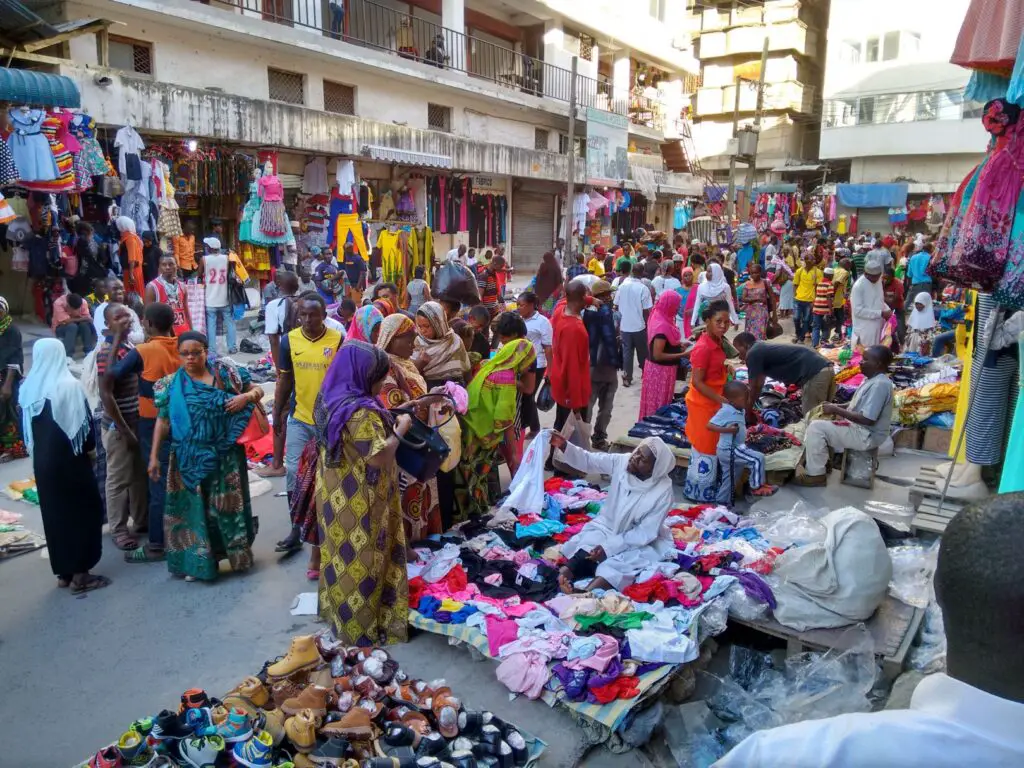- Tanzania’s population is expected to reach 140 million people by 2050.
- The World Bank estimates that Tanzania’s population will double every 23 years.
- Tanzania set to become one of Africa’s and the world’s most populated countries.
Tanzania’s population is expected to reach 140 million people by 2050 given the current high fertility rate of 3.0 per cent. At this rate, the World Bank estimates that Tanzania’s population will double every 23 years henceforth.
In its latest Tanzania Economic Update that was launched in the country’s port city of Dar es Salaam this March, the World Bank says when it comes to population control, the East African country is facing a delicate balance act.
On the one hand, Tanzania has managed to lower its mortality rates and raise its life expectancy but as a result, it is now facing the effects of high birth rates and, they are not all good.
“Tanzania has experienced a rapid drop in mortality and a rise in life expectancy, but persistently high fertility which implies continued high rates of population growth, and with that come challenges as well as opportunities,” reads the report in part.
The update titled, “Overcoming Demographic Challenges while Embracing Opportunities,” the report cites that in its 2022 Population and Housing Census, Tanzania reported to have 61.8 million people making it one of the countries with the highest population growth in Africa.
Not only is Tanzania’s population heading to be one of Africa’s highest but; “It is expected (Tanzania) to be one of eight countries responsible for more than half of the increase in global population over the next three decades,” reports the World Bank.
In fact, of the said eight countries that are expected to represent more than half of the world’s population increase, more than half (five) of these countries will be in Africa.
Read also: US sanctions on Zimbabwe: New directives set to squeeze top leadership
Tanzania’s population: Overcoming Demographic Challenges while Embracing Opportunities
Speaking at the launch event, Tanzania’s Minister of State in the President’s Office (Planning and Investment), Professor Kitila Mkumbo said the government is aware of the population growth trend and has already taken measures.
Prof. Mkumbo reassured stakeholders that the government has taken into account the future risks of the rapidly growing population in its development plans.
“We are already implementing measures to support the youth and giving special focus to the rural population…we will empower them to be more productive,” he said.
“The government is investing heavily in improving access and quality of education and healthcare services through infrastructure development in the two sectors,” he added, citing developments in the two sectors as indicators of the government’s counter actions meant to address the population boom.
According to the minister, the government of Tanzania has also taken deliberate measures to transform the agricultural sector, which he acknowledged employs about a third of the country’s population.
“Some of the measures include increasing the budget allocation to the sector, investing in constructing infrastructure for irrigation farming, providing subsidies to fertilisers and initiating the Building a Better Tomorrow: Youth Initiative for Agribusiness (BBT-YIA),” the minister told stakeholders.
The top government executive was also keen to point out that in the 2022/23 financial year, the government has increased its agriculture budget from $126 million to over $800 million.
“Tanzania has also taken deliberate measures to improve access to quality healthcare services with the recently enacted Universal Health Insurance law, an ambitious piece of legislation aimed at guiding the nation to achieve Universal Health Coverage and protect its 60 million population from catastrophic health expenditures,” he went on to detail.
Notably, the theme of the report is relevant to the country’s current context given the fact that the 2022 Census data shows that Tanzania’s population is predominantly young and rural based.
“76 per cent of our population is below age 35, and 65 per cent of the population is in rural areas. Because of this, it is natural that our future development plans and policies will have to be youth-focused and rural-oriented,” the minister pointed out.
“In the context of a high fertility rate, education remains key in terms of how we go forward because we know that high education outcomes are correlated with low fertility rates,” he reassured stakeholders.
“Our government is once again prioritising family and reproductive health education programmes. We were once champions of family planning on this continent and we are going back to that level,” the professor asserted.
Measures to address high fertility rate
To address the high fertility rate, the government of Tanzania has taken several measures, the minister revealed. He cited actions such as investing in girls’ education including offering free education from primary to secondary schools.
“We are now also allowing back to school all dropouts, including those who left school due to pregnancy…we are giving young mothers a second chance to education and an opportunity to shape their futures,” he said.
World Bank Country Director, Nathan Belete urged the government to accelerate ongoing programmes to expand access to secondary education and strengthen completion rates for girls, while not leaving boys behind.
“Completing quality secondary education for girls is key to fertility reduction, child survival, improved child nutrition outcomes and overall enhanced welfare,” he said seconding the minister’s point.
The World Bank Country Director said it is critical for Tanzania to scale up access to high-quality, affordable family planning and general access to health services. He also called on the government to address social norms using innovative approaches, including community outreach strategies, the use of mobile units and partnerships with private sector outlets.
“Particular attention needs to be given to poor and vulnerable women and young girls who are at a disadvantage because of geographic, socioeconomic and cultural barriers,” he urged.
“The government needs to continue to improve child survival interventions, as well as lowering stunting rates, to give parents the confidence to have fewer children,” the World Bank Country Director said.
Summing up, Mr. Belete called on the government to continue focusing on adolescent girls and promoting the economic empowerment of women and girls to support their reproductive health and strengthen health-seeking behaviours and investments in their children.











